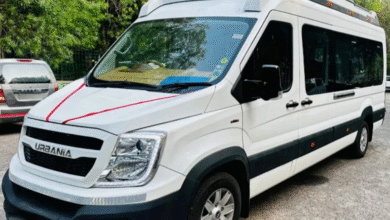Why Proper Boat Navigation Lights Are Essential for Safe Boating

Navigating the waters, whether during the day or night, requires more than just skill and experience it demands visibility. Properly installed and maintained boat navigation lights are crucial for ensuring safety on the water. These lights not only help you see and be seen but also play a vital role in preventing accidents and complying with maritime regulations.
Understanding Boat Navigation Lights
What Are Boat Navigation Lights?
Boat navigation lights are specialized lighting systems installed on vessels to indicate their position, direction, and status to other boats, especially during nighttime or in conditions of reduced visibility such as fog or heavy rain. These lights follow standardized color codes and placement rules to ensure consistency and clarity on the water.
Key Types of Navigation Lights
- Red and Green Sidelights: Positioned on the port (left) and starboard (right) sides of the boat, these lights help other vessels determine your direction of travel.
- White Stern Light: Mounted at the stern, this light indicates the rear of the vessel.
- Masthead Light: A white light placed at the front of the boat, visible from ahead and extending to the sides.
- All-Around White Light: A white light visible from all directions, often used when the boat is at anchor.
Legal Requirements and Compliance
When Must Navigation Lights Be Displayed?
According to maritime safety regulations, boats are required to display navigation lights:
- Between Sunset and Sunrise: To ensure visibility during the night.
- During Times of Reduced Visibility: Such as in fog, heavy rain, or snow, when distance visibility is compromised.
Failure to display the appropriate lights during these times can lead to accidents and potential legal consequences.
Regulations for Different Vessel Sizes
The specific navigation light requirements can vary based on the size and type of the vessel:
- Vessels Under 12 Meters: Typically require sidelights and a stern light.
- Vessels Over 12 Meters: Must display sidelights, a masthead light, and a stern light.
- Sailboats: May have combined sidelights and a stern light, or a tricolor masthead light.
It’s essential to consult local maritime regulations to ensure compliance with the specific requirements for your vessel.
See also: Editing for Narrative Storytelling: Tools and Techniques
Enhancing Safety on the Water
Preventing Collisions
Properly functioning navigation lights allow other boaters to see your vessel and understand your direction of travel, significantly reducing the risk of collisions. In busy waterways, especially at night, these lights are vital for maintaining safe distances between vessels.
Communicating Intentions
Navigation lights also serve as a form of communication. For instance, a masthead light indicates a power-driven vessel underway, while an all-around white light signals that a vessel is at anchor. Understanding these signals helps boaters make informed decisions and avoid potential hazards.
Legal Compliance
Adhering to navigation light regulations is not just about safety it’s also a legal obligation. Operating a vessel without the required navigation lights can result in fines and increased liability in the event of an accident. Ensuring that your boat is equipped with the correct lights and that they are functioning properly is crucial for legal compliance.
Choosing the Right Navigation Lights
Factors to Consider
When selecting navigation lights for your boat, consider the following:
- Visibility Range: Ensure the lights meet the required visibility distances as per maritime regulations.
- Durability: Choose lights made from corrosion-resistant materials suitable for marine environments.
- Power Source: Decide between LED lights, which are energy-efficient and long-lasting, and traditional incandescent lights.
- Mounting Options: Ensure the lights can be securely mounted in positions that provide optimal visibility.
Installation Tips
Proper installation is key to the effectiveness of navigation lights:
- Correct Placement: Position lights according to manufacturer guidelines and maritime regulations to ensure they are visible from the required angles.
- Secure Mounting: Ensure lights are firmly attached to prevent movement or misalignment.
- Electrical Connections: Use marine-grade wiring and connectors to prevent corrosion and ensure reliable operation.
Maintenance and Troubleshooting
Regular Inspections
Regularly inspect your navigation lights to ensure they are functioning correctly:
- Check for Burnt-Out Bulbs: Replace any non-working bulbs promptly.
- Clean Lenses: Keep lenses free from dirt, salt, or algae that can impair visibility.
- Inspect Wiring: Look for signs of wear or corrosion in the wiring and connectors.
Troubleshooting Common Issues
If your navigation lights are not working:
- Check the Power Source: Ensure the boat’s electrical system is functioning correctly.
- Inspect Fuses and Switches: Replace any blown fuses or faulty switches.
- Examine Wiring: Look for loose connections or damaged wires.
Conclusion
Proper boat navigation lights are not just accessories they are vital components that ensure your safety and the safety of others on the water. By understanding their importance, adhering to legal requirements, and maintaining them properly, you contribute to a safer boating experience. For high-quality and reliable navigation lights, consider exploring the options available at Marine Lighting Palm Beach.




